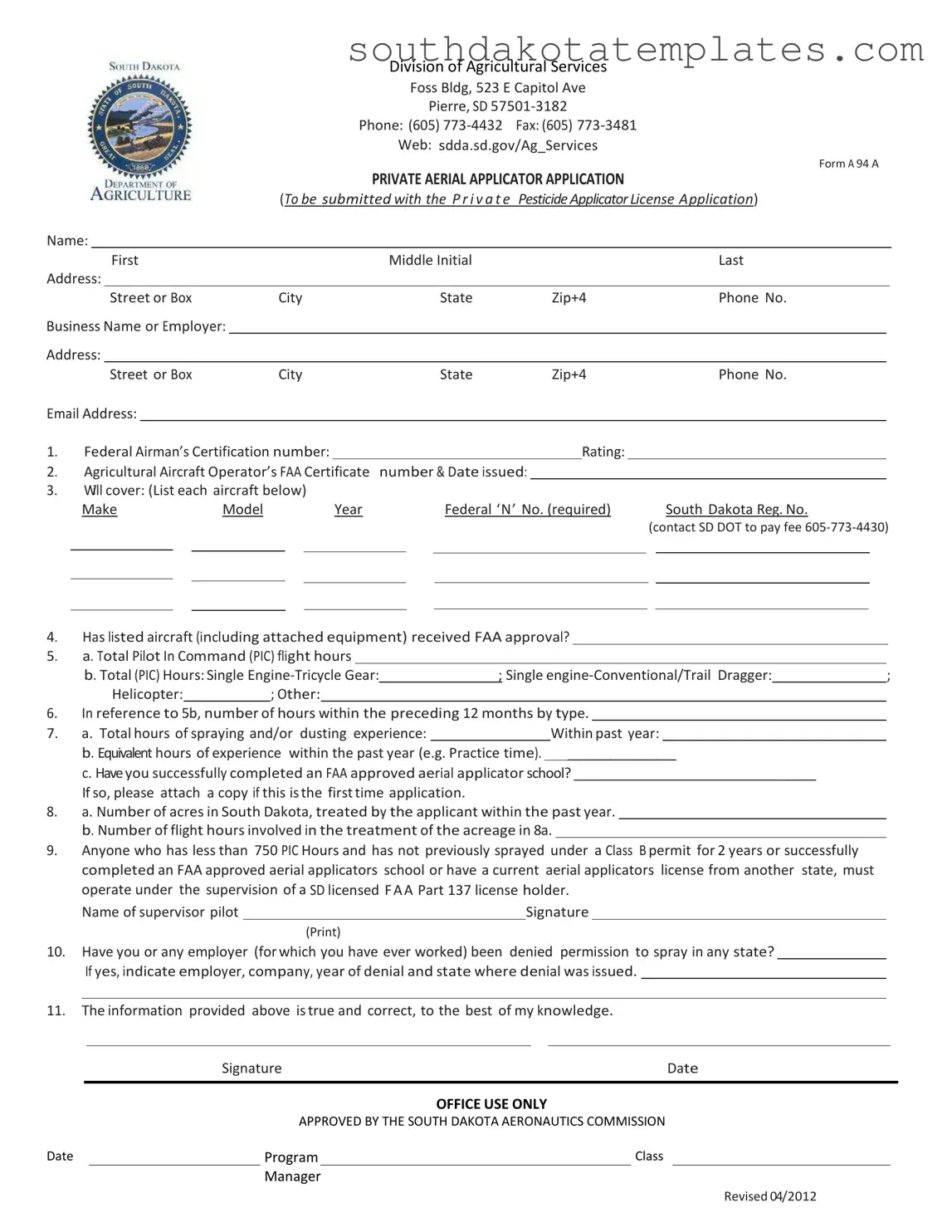The South Dakota A 94 A form is a vital document for individuals seeking to operate as private aerial applicators within the state. This application is not merely a formality; it serves as a comprehensive declaration of an applicant's qualifications and experience in aerial pesticide application. To begin, applicants must provide personal details, including their name, address, and contact information, alongside their employer’s details, if applicable. A crucial aspect of the form is the requirement for federal certifications, such as the Federal Airman’s Certification number and the Agricultural Aircraft Operator’s FAA Certificate number. Additionally, the form requests information about the specific aircraft that will be used, including make, model, and registration numbers. Applicants must also disclose their flying experience, detailing total flight hours and any relevant training, such as attendance at an FAA-approved aerial applicator school. Furthermore, the form emphasizes the importance of safety and compliance, as it mandates that less experienced pilots operate under the supervision of a licensed FAA Part 137 holder. Lastly, the form includes a section to disclose any previous denials of permission to spray in other states, ensuring transparency and accountability. Completing the South Dakota A 94 A form accurately is essential for aspiring aerial applicators, as it lays the groundwork for safe and responsible agricultural practices in the skies above South Dakota.
